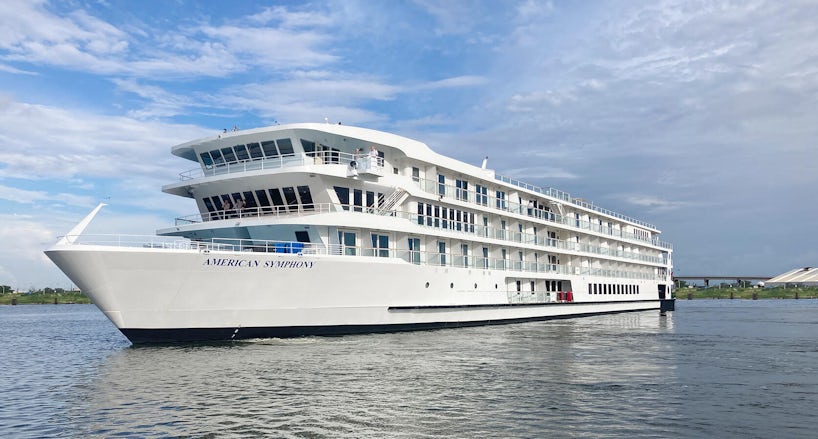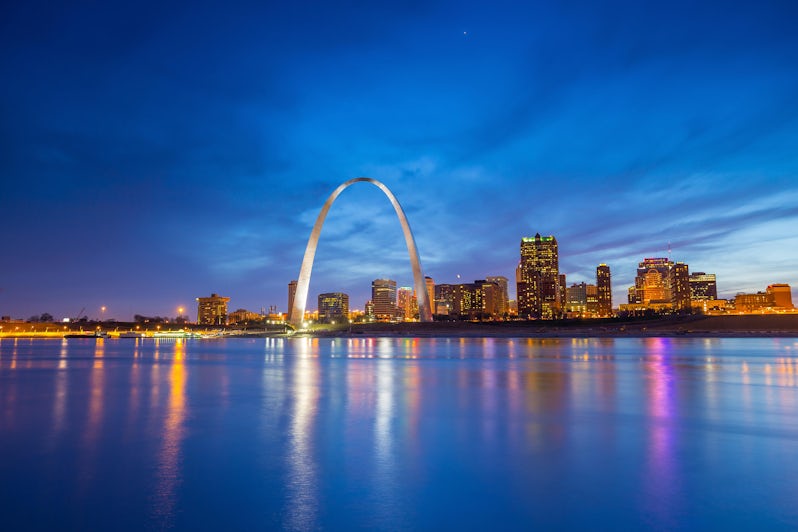
Upper Mississippi River vs. Lower Mississippi River Cruises



Choosing either an upper Mississippi River cruise or a lower Mississippi River cruise generally depends on what your expectations are. Both options allow you to venture through America’s heartland by water, exploring the country’s history as you go. But the mighty Mississippi is a long river, so Mississippi River cruises are generally broken into these two halves.
Sailing the full Mississippi, which is from New Orleans to St. Paul, Minnesota, can take anywhere between 14 and 21 nights, depending on the cruise line and itinerary you choose. For those who don’t have two or three weeks to cruise, breaking it into a more manageable week-long or even a 10-night cruise means you’ll see either the upper Mississippi River or the lower.
Here are the pros and cons of cruising each half of the Mississippi River to help you decide whether an upper Mississippi or one that covers the lower Mississippi portion is right for you.
Cruise Lines That Cover Both the Upper Mississippi River and the Lower Mississippi River

American Cruise Lines is an American family-owned and operated company featuring 17 river and coastal ships. Ships the line sails on the Mississippi River include stately paddle wheelers and three of the newest ships on the river: American Melody, American Symphony and American Serenade.
American Queen Voyages (formerly American Queen Steamboat Company) operates a fleet of seven river, coastal and expedition ships. On the Mississippi, AQV utilizes two traditional paddle wheeler ships: American Queen and American Countess.
Viking, best known for its European river cruises, is the new kid on the Mississippi, currently operating one ship: Viking Mississippi. Because passenger ships that sail directly between U.S. ports of call must follow the Passenger Vessel Services Act (PVSA), Viking designed the Mississippi specifically for its namesake river and had it built in Louisiana.
Lower Mississippi River Cruises: Pros and Cons

Lower Mississippi cruises typically include several itinerary choices, including seven-night round trips from New Orleans. One-way routes of varying lengths operate between New Orleans, Memphis and St. Louis. Popular stops include Natchez, Tunica and Vicksburg in Mississippi and Baton Rouge, Oak Alley and St. Francisville in Louisiana, among others.
There is no cruise option as deeply rooted in southern U.S. history as a lower Mississippi River cruise. Itineraries visit cities steeped in Civil War history, antebellum plantations and somber battlefields, and explore how the South's particular history inspired its cuisine and music.
Food and music follow passengers on a lower Mississippi sailing, with lots of down-home, Cajun and Creole meal choices and plenty of jazz, blues and rock 'n' roll to get your toes tapping all night.
Louisiana, Mississippi, Tennessee and Missouri can get awfully hot during the dog days of summer. Be prepared for high humidity and mosquitoes. The flip side of that is that the lower Mississippi River has weather suitable for year-round cruising -- including holiday sailings in November and December.
Upper Mississippi River Cruises: Pros and Cons
Upper Mississippi River sailings are limited by weather in the north, with sailings only available June through October. Itineraries are also a bit limited. The primary route is between St. Louis and St. Paul. AQV lists nearby Alton, Illinois and Red Wing, Minnesota as beginning and ending points. These are simply suburbs of St. Louis and St. Paul, respectively.
Ports of call on the upper Mississippi River include Winona in Minnesota, Bettendorf, Dubuque, Davenport and Burlington in Iowa, and LaCrosse in Wisconsin.
The scenery along the upper Mississippi River is beautiful. The farther north you are, the more likely you are to spot wildlife while cruising. You'll see egrets, hawks and bald eagles, and, if you're lucky, spot turtles and otters in the river. Fans of engineering also will find something to love on upper Mississippi sailings, as only on the upper part of the river will your cruise go through a series of more than twenty locks.
In general, summer temperatures on upper Mississippi sailings are slightly less than on lower Mississippi cruises, and there is usually less humidity. However, choosing an upper Mississippi itinerary can be a bit of a gamble. Water levels must stay even for riverboats to fit under the large number of bridges that span the Mississippi from St. Louis northward.
Even a little bit of flooding along the Mississippi from too much rain can raise the level of the river, making it impossible for boats to get under bridges. And in drought years, the opposite is true. Ships may find portions of the river impassable.
Upper Mississippi vs. Lower Mississippi River: Bottom Line

Choose a lower Mississippi itinerary if you're interested in U.S. history, particularly the Civil War. Also choose a lower Mississippi cruise if you want more Southern cuisine, a music-themed cruise or want a greater choice of itineraries.
Opt for an upper Mississippi sailing if you're interested in mainstream Americana or want scenic views throughout your sailing. Either itinerary has potential for itinerary changes caused by either too much rain or too little.